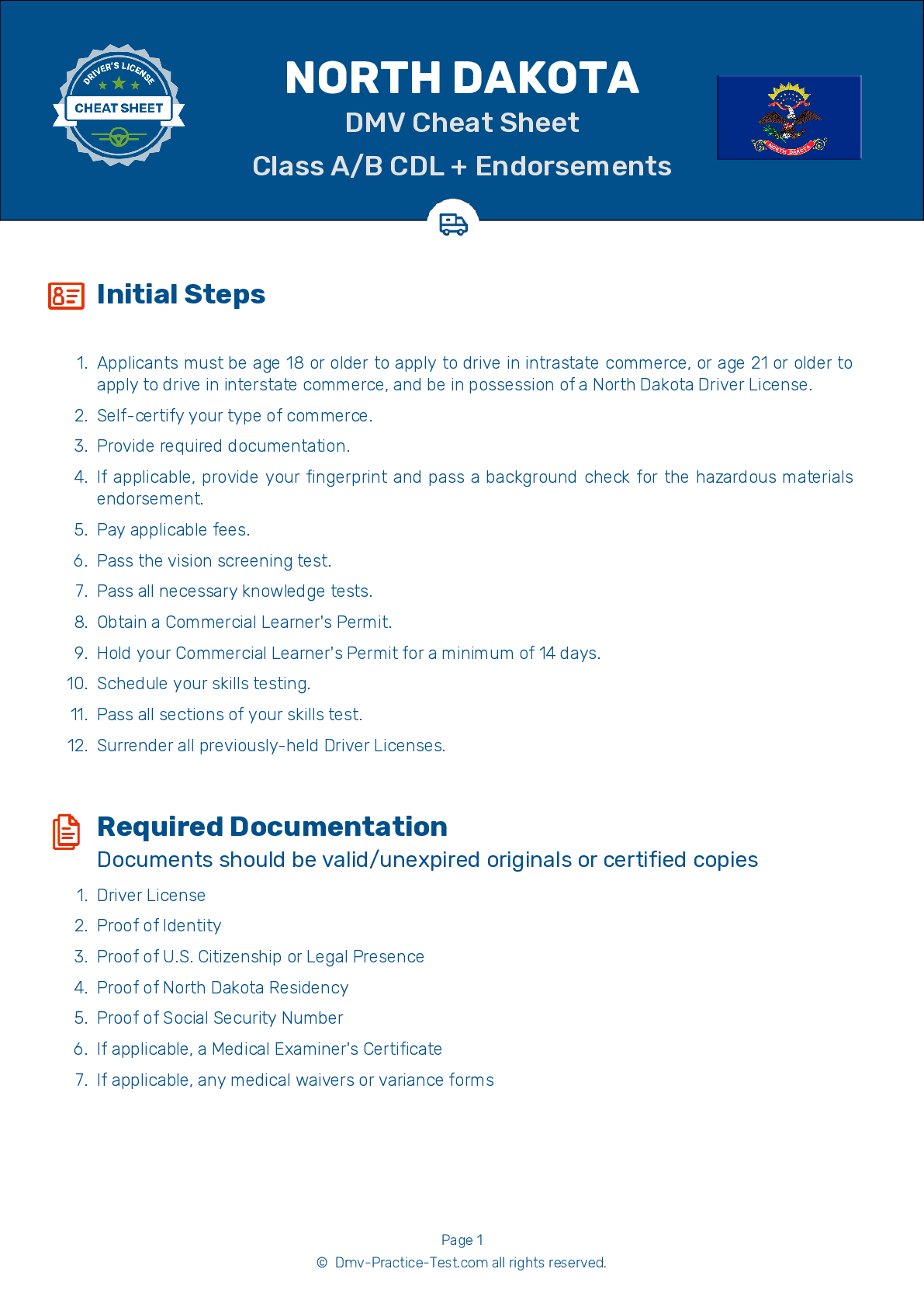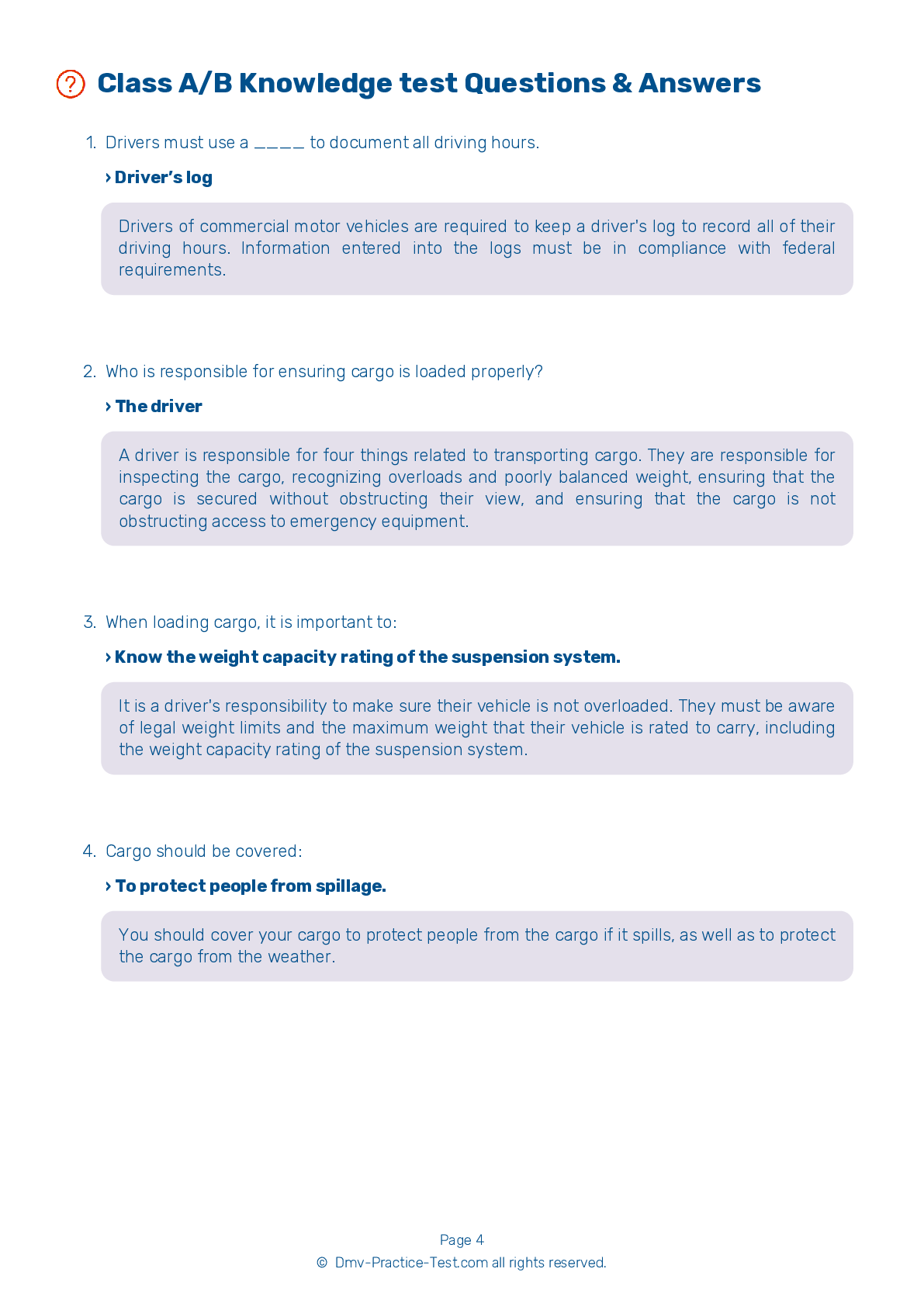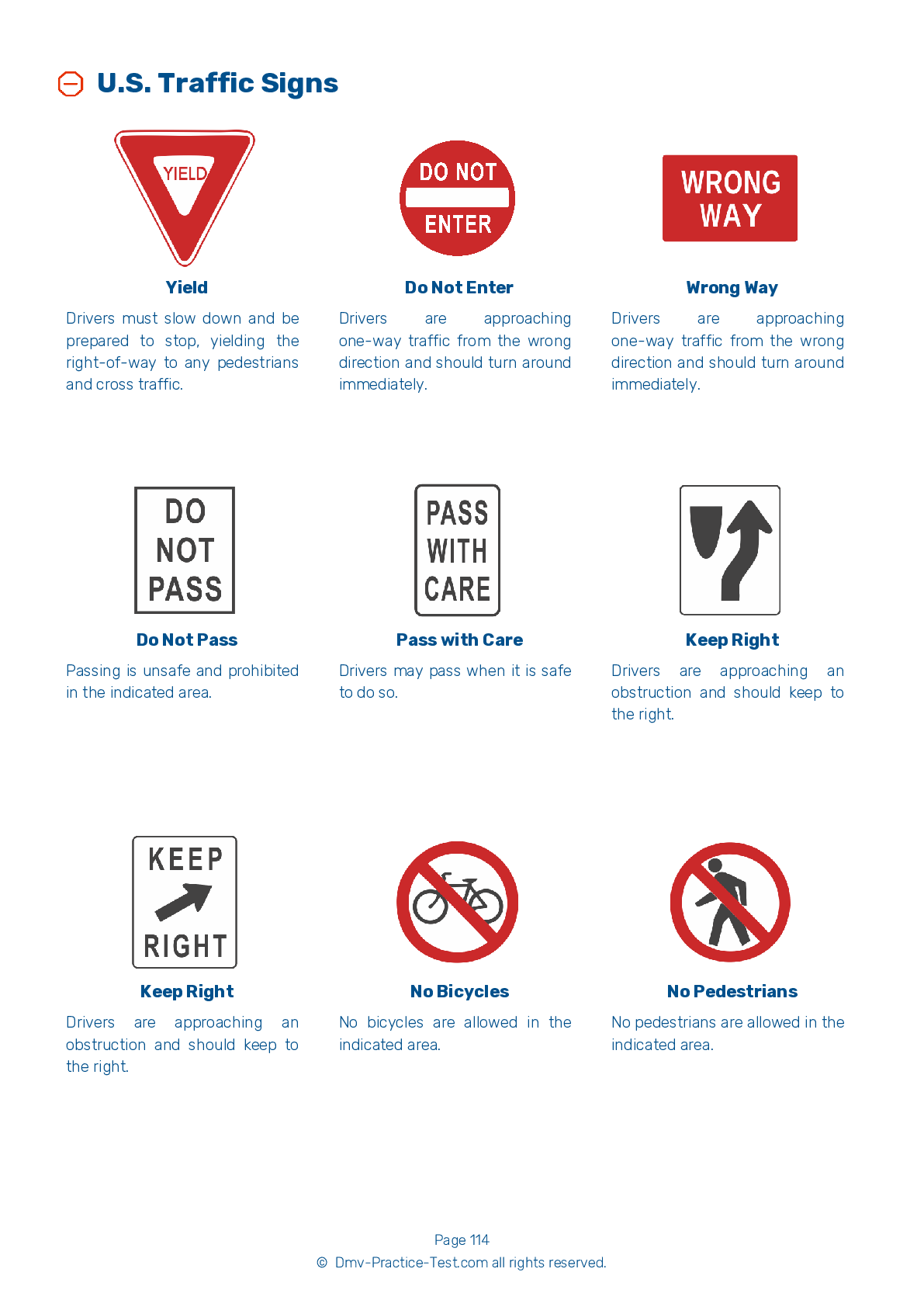Class A Driving Test | North Dakota 2025 #1 Page 6 of 7
Train for FREE online with our North Dakota class A license test. The official exam test consists of several obligatory parts, with all of them checking your knowledge of different blocks of road rules. If you need to obtain a ND CDL class A permit in 2025, practice as much as possible. Free sample tests published on our website will help you check and improve your knowledge and boost your grades. Please bear in mind that CDL class A requirements may vary from state to state.
36 . Loading cargo onto a vehicle:
Even if someone else loads cargo onto a vehicle, the driver is responsible for properly inspecting the cargo, ensuring that it is properly loaded and secured, and ensuring that it does not obscure their view or access to emergency equipment.
37 . If a tire fails, the driver should:
If a tire fails, braking could cause a loss of control. Unless braking is necessary to avoid a hazard, you should stay off the brakes until your vehicle has slowed considerably. Only then should you brake very gently, pull off the road, and stop.
38 . When traveling with cargo, the cargo should be checked:
Cargo should be inspected before beginning a trip, within the first 50 miles of the trip, and every three hours or 150 miles traveled thereafter. The driver of a truck transporting cargo is responsible for the cargo being safely secured throughout the trip.
39 . When double clutching, if you remain in neutral for too long and can’t get your vehicle into the next gear, you should:
If you stay in neutral for too long while double clutching and have difficulty switching your vehicle into the next gear, don't force it. Return to neutral, release the clutch, increase the engine speed to match road speed, and try again.
40 . When stopping, the brake pedal:
When stopping, the brake pedal should be pushed down gradually. Control the pressure so your vehicle comes to a slow, safe stop.
41 . Most heavy-duty vehicles use:
Most heavy-duty vehicles use dual air brake systems. A dual system has two separate air brake systems with a single set of controls.
42 . If being tailgated, you should:
You may be tailgated when you can't drive fast enough to keep up with other traffic. If a heavy load is slowing you down, stay in the right lane, if possible.
See the exact questions that will be on the 2025 North Dakota DMV exam.
99.2% of people who use the cheat sheet pass the FIRST TIME
Lillian MCcranie explains how our CDL study guide was helpful in passing the exam and recommends it to everyone.
Cameron tells us how he purchased the CDL exam, and found it to be a useful tool which helped him pass the exam and find a job.



